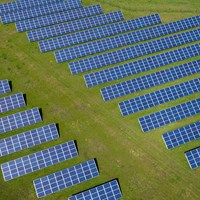Vermont Solar Market Pathways Update
Solar is growing as a significant and strategic contributor to the energy system. In 2014, with support from the U.S. Department of Energy SunShot Initiative, VEIC began a three-year stakeholder engagement process and scenario modeling study to investigate opportunities and challenges for Vermont becoming an advanced solar economy. We defined advanced to mean at least 20 percent of the state’s electricity comes from in-state solar by 2025.
The study discussed the business, technical, and regulatory implications of solar market development. It also examined the contributions solar can make to the state’s broader energy and emissions targets and policies and concluded that Vermont is capable of meeting 20 percent of its electricity needs with solar, by 2025. The report also determined that meeting that goal saves money, compared to a scenario of “business as usual.”
This report is a three-year update that assesses Vermont’s progress toward the advanced solar target and projections for complementary technologies. The results are mixed.
For example, if the percentage growth rate from the last five years continues, Vermont can meet the solar development pathways target. But Vermont has not yet installed solar capacity at the annual installation rate necessary from 2020 to 2025 to meet the target.
That is, growth has been uneven over the past five years in response to various market and incentive conditions, and the last three years have not matched the amount of capacity installed in 2016. Current challenges to continuing the pace of solar installation necessary to meet the targets are the possible phase-out of federal tax credits, recently added tariffs on imported equipment, and the addition of fees for new projects in certain areas.
As the state progresses toward achieving 1 GW of cumulative capacity, there will be increasing technical issues related to siting and integration of new installations. There will also be increased pressure to make sure the benefits and costs of solar development are equitably shared.
The 2025 solar target is just a portion of what Vermont needs to meet its “90 percent renewable energy by 2050” target. Efficiency, strategic electrification, and non-solar renewables all need to grow, at growth rates matching solar’s, to put Vermont on track to meet these objectives.
The original report and this update are meant to provide timely information and analysis to assist decision makers and other stakeholders in supporting the achievement of the State’s targets.
